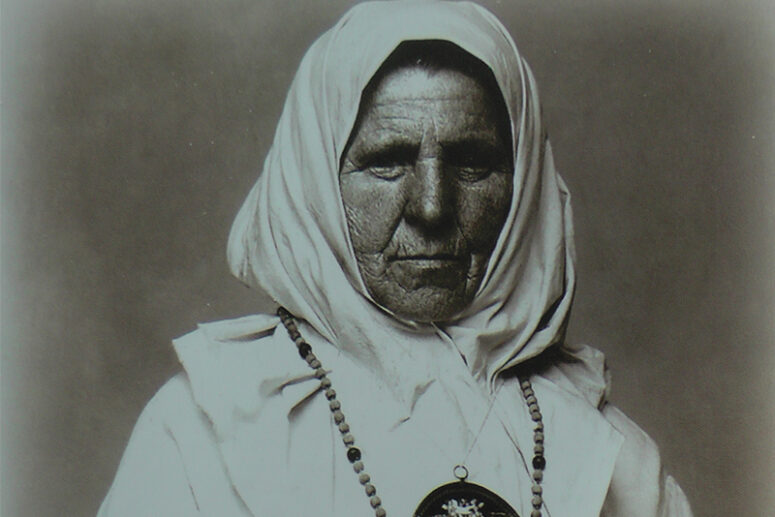
Hundreds of pilgrims come every day to venerate the relics of the blessed Matrona of Moscow resting in the Intercession Monastery of Moscow. However, few people know about another Matrona, who also took upon herself the feat of folly and becoming a discalceate wanderer. During her lifetime, Matrona the Barefoot was revered as a pious and clairvoyant ascetic. Even the royal family turned to Matrona for spiritual advice, while she herself was a spiritual child of St John of Kronstadt. Today, the veneration of the holy fool Matrona is reviving, and there are reasons to believe that in the coming years she may be among the saints glorified by the Church.
Matrona is not widely known, primarily because until recently there were hardly any reliable data about her life. However, due to the extensive archival work carried out from 2015 until 2019, valuable information about the ascetic was obtained, although certain periods of her life remain vague. At that point, documents were prepared for the canonization committee. The session of the committee is scheduled to coincide with the completion of the restoration work in the “Consolation of All Sorrows” Church in St Petersburg, where Matrona lived in a chapel for about 15 years.

Early Years
Information about Matrona’s childhood is scarce. She was born in 1833 in the village of Vanino, Kostroma province. Her parents were poor peasants who did not even know how to read or write. Matrona was also illiterate all her life.
Matrona was in two marriages. In 1850, she was married off. In the two subsequent years, she gave birth to two sons. In 1855, Matrona’s first husband went to serve in the army and returned home only ten years later. After five more years, he died an unnatural death in unknown circumstances.
After some time, Matrona married again. During the Russian-Turkish war (1877-1878), her new husband was called up for military service. Matrona decided to go with him as a medical nurse. She earned a salary of 25 rubles, all of which she distributed among the wounded soldiers. At that time, one could buy 5lbs of beef or 40 eggs for one rouble.
Matrona’s husband died during that war. After the end of the war, tragic family life influenced Matrona’s decision to devote the rest of her days to God.
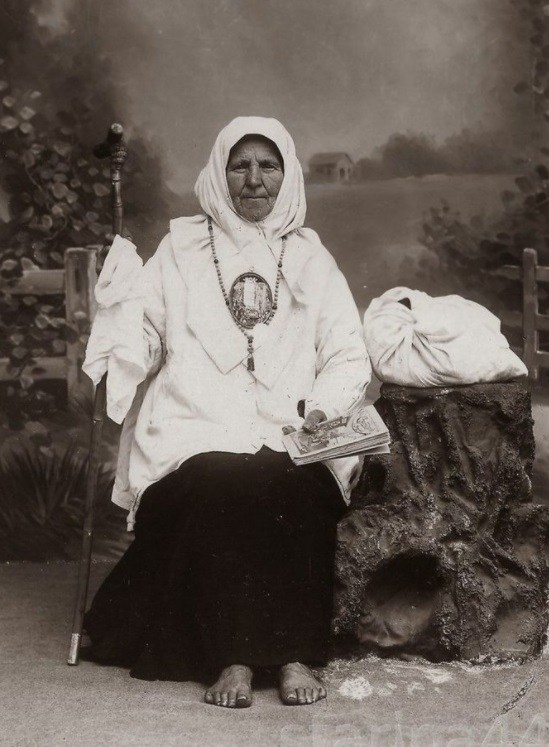
Ascetic Life
Matrona sold all her property and distributed it among the poor, taking upon herself the yoke of foolishness and becoming a discalceate wanderer. Travelling barefoot in winter and summer, regardless of the weather, she wore white summer clothes, as a symbol of angelic purity.
From that time on, Matrona began to make pilgrimages to holy places and monasteries. Dozens of times she visited the Solovetsky Monastery, Valaam, the Trinity-Sergius Lavra, the Sarov Hermitage. She visited Jerusalem four times. After spending about 3 years on a continuous pilgrimage, she settled in St Petersburg.
Living in the city brought Matrona certain difficulties. Several times the police detained her for walking without shoes. That caused her to write a petition to the Most Holy Governing Synod, asking for permission to follow her vow. Here is an excerpt from Matrona’s request:
“The police say that I am confusing people, whereas I am only witnessing to the Lord’s mercy, allowing my bare feet not to freeze in the cold in fulfilment of a vow. How can such testimony instil in the souls of people anything other than support for the Orthodox precepts?”
Ordinary people soon began treating Matrona as a clairvoyant saint, seeking her spiritual advice, and requesting her prayer support. Hundreds of people gathered around the blessed ascetic, who received visitors for days on end.
Recognition among common folk eventually made Matrona known in high society, attracting noble benefactors who began to regularly donate large sums to her. Matrona distributed all the donations to the needy, as well as to monasteries and churches, to which she regularly donated lamp oil and candles. Alexander Plotnikov, the first compiler of Matrona’s biography, knew her personally and claimed that she sent churches more than 50 puds (= 819.034 kg) of oil every year.
Miracles
There are many testimonies of miracles and prayerful help, associated with the blessed Matrona, both during her life and after her death. Let us look at one of them.
The head of district police, who treated Matrona with great reverence, was going to Siberia, where he was assigned to a new place of service. When he came to Matrona for a blessing, she gave him an icon of the Dormition of the Mother of God and said, “Here is my blessing to you. The Queen of Heaven will always be your Intercessor and Patron. Never part with Her. Wherever you go, take this icon with you and no one will kill you, and not a single bullet will hit you”.
These words confused the officer, since he was going to an ordinary service, not a war or a battlefield. However, Matrona’s words turned out to be prophetic. In 1905, a revolutionary movement flared up in Siberia, which the officer had to fight. The revolutionaries made many attempts on his life and even announced his death sentence, but during the entire service, the Lord protected him. In Matrona’s words, “not a single bullet hit” the officer.
In 1910, the officer came back to St Petersburg and returned the icon to Matrona. The blessed ascetic bequeathed it to the Grand Duchess Elisabeth Feodorovna. In 1911, Matrona’s will was fulfilled. Having learned about the death of the elderess, St Elisabeth burst into tears and sent a wreath to her grave.
Let us pray that the Lord, if He pleases, glorifies the blessed Matrona of Petersburg through His Church and through her holy prayers shows the world many more miracles and healings.
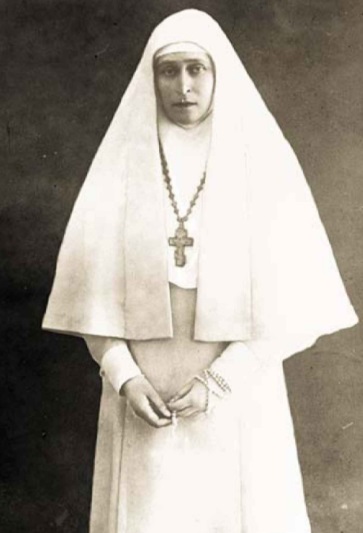


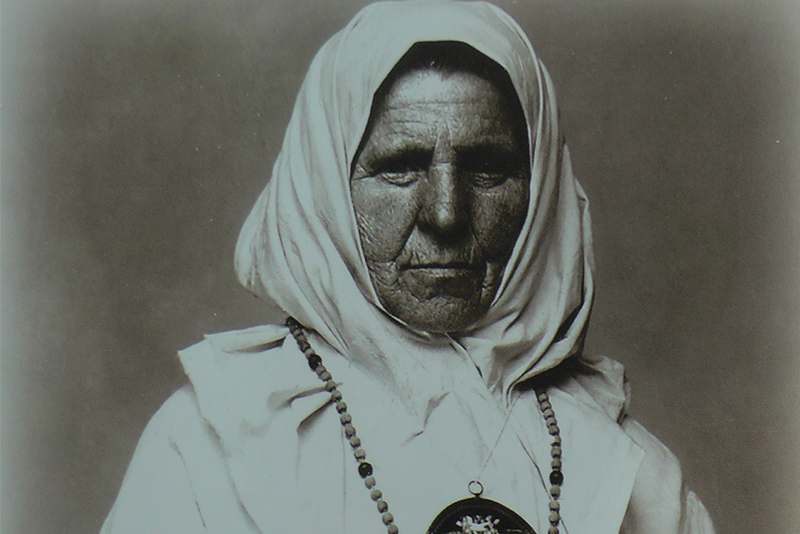
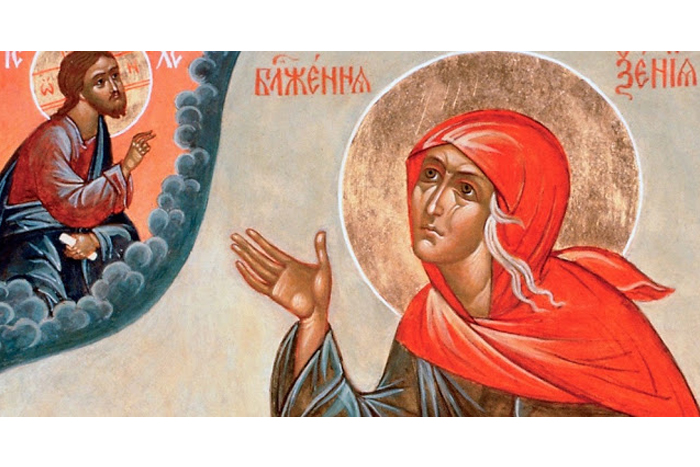
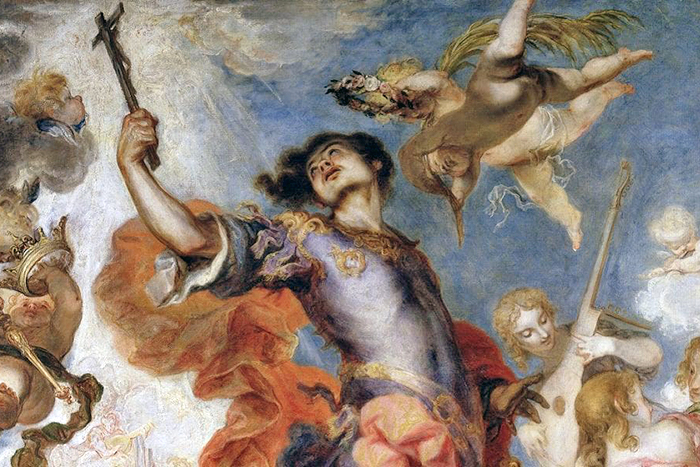

Saint Matrona pray to God for us!🙏❤️